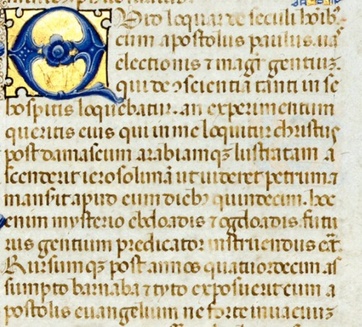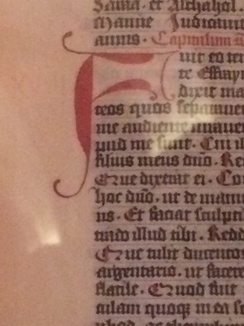Renaissance (1300-1500)
Renaissance Bibles fall into two distinct stylistic classes. One uses the familiar Gothic black letter script and the other is Italian and uses the rotunda script, which is often associated with the oversized choir books. The Bibbia di Borso d’Este, for example, uses the rotunda script, whereas the Giant Bible of Mainz (both pictured below) features a Gothic script. Other examples include the Salzburg Missal, the Wenzel Bible, the Furtmeyr Bible, the Ottheinrich Bible, the Olomouc Bible, and the Bible Boskovická. Features include illuminated illustrations. These were spare no expense Bibles. The Giant Bible of Mainz, for example, when opened was 32” wide and 22” tall. Each page was 16” by 22” with 60 lines of text in two columns. Floriated book opening letters. Pen flourished chapter opening letters in red, blue, and gold. The finishing elements are of the calibre of an exquisite choir book. See video at the Library of Congress on the Giant Bible of Mainz and its relationship with the Gutenberg Bible here.


